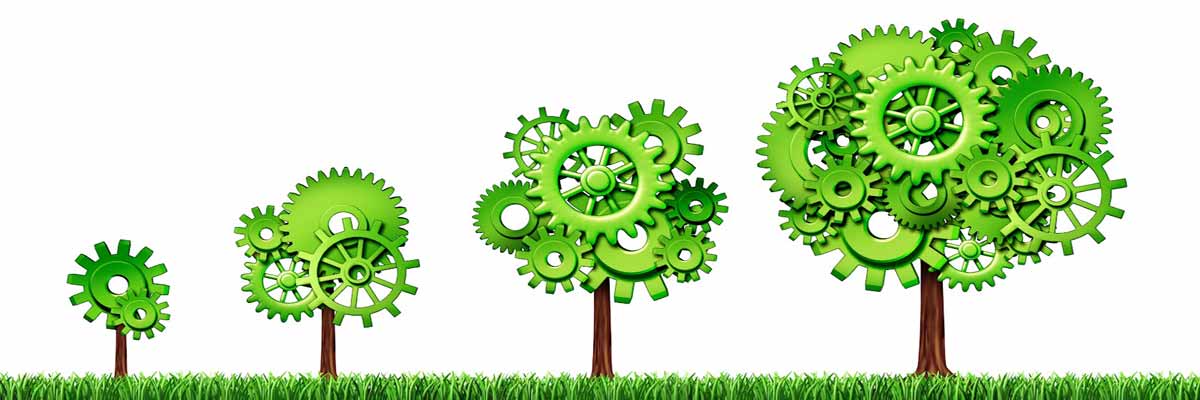Don’t Pin Your Hopes on a “Green” Economy
Both presidential candidates have stumped for a new “green” economy. To me this smells of the supposed transformation to the “information economy” touted only a decade ago. Fortune had this to say on June 30th:
What senators McCain and Obama believe about U.S. energy policy matters – hugely. To fight global warming, the next President will oversee the transition to a new, green economy , which will result in one of the biggest business transformations of the 21st century and potentially one of the largest transfers of wealth since the creation of the income tax.
Leaders, lauded by environmentalists for jumping on the green bandwagon, have promoted alternative energy technologies, alternative transportation, green homes, etc. It is my belief that these politicians care less about the state of the environment, and more about maintaining the status quo growth of the economy. The manufacturing economy in the 1970′s and 1980′s faced the insurmountable obstacles of higher energy prices, inflation, and globalization of trade, and rapidly declined. While many continue to pin their hopes on the “information age” to continue to propel the US economy – technology stocks remain at less than half their value achieved in the initial boom, US economic growth has been anemic, and job creation minimal. Decoupling of the information economy from the real economy did not take place, and the promises of six figure IT jobs for workers laid off from manufacturing jobs did not pan out. Likewise, I fear the “green economy”, for all of the good that it may do for the environment, will be unable to be the next engine of economic growth.
Why not? The reasons are three-fold. First, the credit crunch. Business start-ups require infusions of capital in the form of business loans and venture capital. If the current trend in business lending continues to worsen, funds will become less available for new businesses, and the higher interest rates may make borrowing unaffordable. The highly technical nature of many “green” jobs and businesses require high start-up costs and a long term commitment. Consumers, too, will find it difficult to finance large investments in personal alternative technologies, home upgrades, or retrofitting without access to cheap home equity loans.
The second factor that will limit the growth of green industries and infrastructure is the consumer’s shrinking pocket book. Electric-hybrid cars like the Chevy Volt promise to dramatically improve fuel mileage and transportation. But at a cost of over $40,000, how many struggling American families will be able to afford these vehicles? Promising alternative energy technologies, like solar electric and geothermal heating/cooling, also require massive up front costs. While never having to pay a utility bill again sounds wonderful, the nearly $100,000 cost to do so (Solar PV + Geothermal) is cost prohibitive. “But surely costs will come down as the technologies are adopted,” you say. Maybe, maybe not. If the cost of energy continues to rise, manufacturing processes and installation costs for solar and geothermal will also continue to rise. Barring a massive government subsidy, these technologies may stay out the reach of many Americans for decades.
These subsidies if enacted would require increased taxation at the federal, state and local level. With the economy on life support, tax revenues declining, and health care costs for aging baby boomers rising rapidly, how else will we pay for such a plan? While I support carbon taxes as a means to reduce greenhouse gases, surely the increased tax burden on consumers will reduce out of pocket spending.
The third factor is our crumbling infrastructure. Today, many cities rely upon water and sewer systems that are over a century old. The electric grid is aging and is incapable of supporting the proposed transition to 25% renewable energy production. Bridges, roadways, and rail system maintenance has been delayed over the years, and will require massive spending to maintain systems. Projects like these require tremendous amounts of energy, and the expense grows each year that they are delayed. The required spending on infrastructure projects will further strain state and local budgets with a resulting decline in available funds for “green” projects. Our national debt is already approaching $10 trillion, a number that is quite unfathomable.
I don’t want to give the wrong impression, I do favor programs to encourage home retrofitting, public transportation investment, and alternative energy projects. I just worry about the ability of “green” technology to power the entire U.S. economy, given the dire straits we are in. The reduced availability of cheap energy is reverberating through our economy. Any actual shortages of gasoline, heating oil, and diesel would sound the death knell for our consumer driven economy.
Trying to fuel the US economy with “green” initiatives can be likened to trying to run all of our 250 million vehicles on ethanol. Just because the technology exists, doesn’t mean that it is feasible to do so. My advice? When politicians start campaigning on “green economies”, make sure you listen to what they are saying out of the other side of their mouths.






